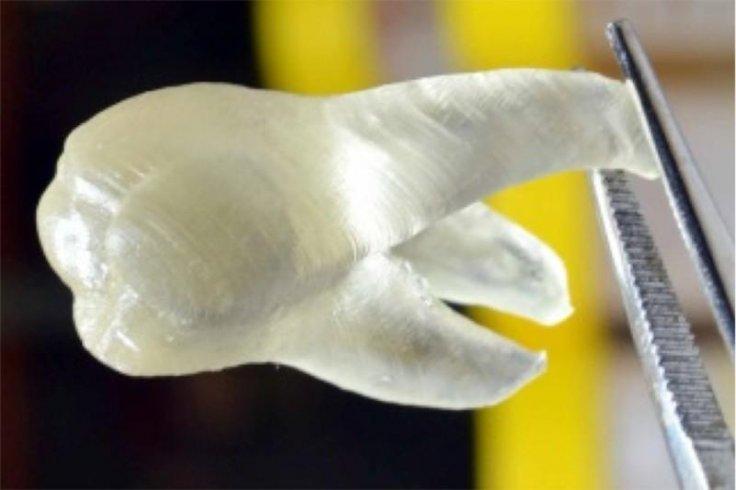 Innovations in 3D printing are marching toward us, in droves, faster than most people can keep up with today. There are so many, in fact, that it’s easy to start becoming desensitized to the stunning impacts many of these improvements and completely new inventions are allowing.
Innovations in 3D printing are marching toward us, in droves, faster than most people can keep up with today. There are so many, in fact, that it’s easy to start becoming desensitized to the stunning impacts many of these improvements and completely new inventions are allowing.
It’s good to see some things becoming so common that we are now used to hearing about them–like 3D printed prosthetics. But still, there are many different complexities to be explored with this technology that either has or is on the verge of transforming so many processes in ways we just never considered. And many of these more complex technologies are still being developed behind the scenes.
Why aren’t we seeing even more complex functions in 3D printing from the genius of the world, however? It would seem we should be able to do just about anything we want to at this point. This subject was recently covered in a paper ‘3D Printable Antimicrobial Composite Resins,’ published in the Advanced Functional Materials journal.
Ongoing studies by the researchers at the University of Groningen in the Netherlands have resulted in ‘expanding on the repertoire of 3D printable materials to include antimicrobial polymer resins.’ This is really of enormous significance, simple as it sounds, as it could lead to the elimination of some infections.
“Although 3D printed objects composed of metals, ceramics, polymers, and even cell-loaded hydrogels have been realized, the development of materials with integrated functions amenable for 3D printing has been slow,” state the researchers.
“…since many medical device surfaces attract microorganisms, engineering an intrinsic antimicrobial functionality in or onto implantable medical devices can reduce the risk of microbial infections associated with the presence of a foreign material in the human body.”
These antimicrobial resins, as applied to 3D print, could have the extremely important ability to prevent major illnesses. And these researchers in the Netherlands have made significant progress through the invention of a 3D printed plastic that actually eliminates bacteria directly upon contact.
So far, the researchers have created 3D printed models that could be used in dental applications, fabricating numerous dental items like implants and orthodontics, cured with UV light. Using dental resins, the incredible benefit comes from the embedded antimicrobial quaternary ammonium salts inside the polymers. Because they are positively charged, they quickly cause negatively charged bacterial membranes to burst and die.
While they’ve just begun with the dental arena, the potential is of course enormous. Just in the case of the dental realm, the ability to stop infections caused by dentures and implants would be invaluable. So far, they are able to kill nearly all the bacteria causing tooth decay within their study. There are many other factors to consider, however–even just with basic considerations like compatibility with everyday toothpaste.
Once researchers progress from testing in dental applications, it’s quite staggering to think of the implications this 3D printing technology could have in eliminating bacteria–it’s also amazing to consider how many lives could be saved in the future as individuals could avoid fighting off a multitude of different infections with the potential to do great harm. Let’s hear your thoughts on this new material. Discuss in the Anti-bacteria 3D Printing forum thread on 3DPB.com.
[Sources: Advanced Functional Materials, International Business Times]
Subscribe to Our Email Newsletter
Stay up-to-date on all the latest news from the 3D printing industry and receive information and offers from third party vendors.
You May Also Like
Gorilla Sports GE’s First 3D Printed Titanium Cast
How do you help a gorilla with a broken arm? Sounds like the start of a bad joke a zookeeper might tell, but it’s an actual dilemma recently faced by...
Nylon 3D Printed Parts Made More Functional with Coatings & Colors
Parts 3D printed from polyamide (PA, Nylon) 12 using powder bed fusion (PBF) are a mainstay in the additive manufacturing (AM) industry. While post-finishing processes have improved the porosity of...
$25M to Back Sintavia’s Largest Expansion of Metal 3D Printing Capacity Since 2019
Sintavia, the digital manufacturing company specializing in mission-critical parts for strategic sectors, announced a $25 million investment to increase its production capacity, the largest expansion to its operations since 2019....
Velo3D Initiates Public Offering in a Bid to Strengthen Financial Foundations and Drive Future Growth
Velo3D (NYSE: VLD) has been among a number of publicly traded 3D printing firms that have attempted to weather the current macroeconomic climate. After posting a challenging financial report for 2023,...

































